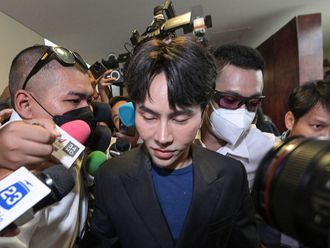
Four times, Rafael Ruiz recalled, he rejected offers from New York prosecutors to enter a guilty plea and admit to participating in a gang rape on a Harlem rooftop in 1984, even though it would have meant serving much less time. He was under arrest but he had good reason for turning down the deals.
"I told them," he said, "I didn't do nothing wrong."
On Tuesday, a judge finally agreed with him. At a hearing in State Supreme Court in Manhattan, Ruiz was formally cleared of the crime. But the exoneration came far too late: He had already served 25 years in prison.
"I feel very happy," he said in an interview. "At least I got my life back."
Ruiz's ordeal began on May 18, 1984, when, at age 24, he was charged with taking part in the violent rape of an 18-year-old woman who had been found the month before hyperventilating on a sidewalk on First Avenue in East Harlem.
The woman told the police that a man named "Ronnie" had driven her that night to a building in the Robert F. Wagner Houses, a public housing complex in East Harlem. Ronnie, she said, had taken her to one of the apartments in the building and then up to the roof where she was raped and beaten by at least three men.
Within two weeks of the assault, the victim led detectives to the apartment she believed she had been to just before the rape, court papers said. The police found Ruiz, who was staying there with his brother, and asked him to come down to the station house for questioning. He agreed.
Later that night, the victim identified Ruiz in a photo array of suspects as one of the men who had attacked her, even though he did not fit her original description of her attackers. Shortly after, she identified him again in an unusual process called a "one-on-one show-up," picking him out as one of her assailants as he stood alone in a room behind a one-way mirror.
The police typically use single person show-ups, instead of lineups with several people who look similar, only in emergencies, when a victim is ill or close to death.
Ruiz's lawyers sought to keep the identification of him from being used as evidence, but it was allowed to stand, court papers said, and Ruiz was indicted. At his trial, prosecutors from the Manhattan district attorney's office relied mostly on the victim's testimony and her initial identification of Ruiz as one of her attackers.
Ruiz took the stand in his own defense and said that he could not have taken part in the rape. He was Hispanic, he said, and the young woman had initially said all of her attackers were black. He also said that he could not be Ronnie - the man who had driven the woman to the public housing project - because he didn't know how to drive.
He was nonetheless convicted and sentenced to eight to 25 years in prison.
'A startling discovery'
In 2003, 15 years after losing his appeal, Ruiz and his family hired a lawyer, William M. Tendy, who began to reinvestigate his case. A year later, Tendy made a startling discovery, court papers said.
Ruiz's brother - the man he had been staying with at the time of his arrest - lived in Apartment 16B at 2400 Second Ave., one of the buildings in the Wagner Houses. Around the same time, a woman who lived across the hall in Apartment 16C had a boyfriend named Ronnie.
Tendy believed the victim had accidentally led the police to the wrong apartment and then mistakenly put them onto Ruiz's trail.
Tendy was unable to track down the woman to corroborate this story before she died in 2009. It took more than a decade to locate the victim, but Tendy eventually found her with the help of the Innocence Project and the prosecutors in the Conviction Integrity Program of the Manhattan district attorney's office.
When prosecutors interviewed the victim in September 2018, she said that she remembered "feeling pressure" from the original detectives to identify a suspect, the court documents said. The detectives, she recalled, were "being pushy," according to the papers, and had told her that whoever had attacked her was "hurting women." She also admitted she was still uncertain she had picked the right man.
In late 2019, after years of fruitless searching, the Innocence Project found its own piece of the puzzle: the rape kit from the victim's case. When lawyers from the project checked samples of Ruiz's DNA with samples from the kit, they did not match, court papers said.
Now what?
By that point, Ruiz had been out of prison for nearly a decade, a time during which his family had supported him because, as a felon, he had a hard time finding jobs.
Now 60 years old and living in the Bronx, Ruiz said he is not sure anyone would still want to hire him.
"My record is clean and my life is given back to me, but what am I supposed to do?" he said. "I'll just stay out of trouble and wait until something comes around."












